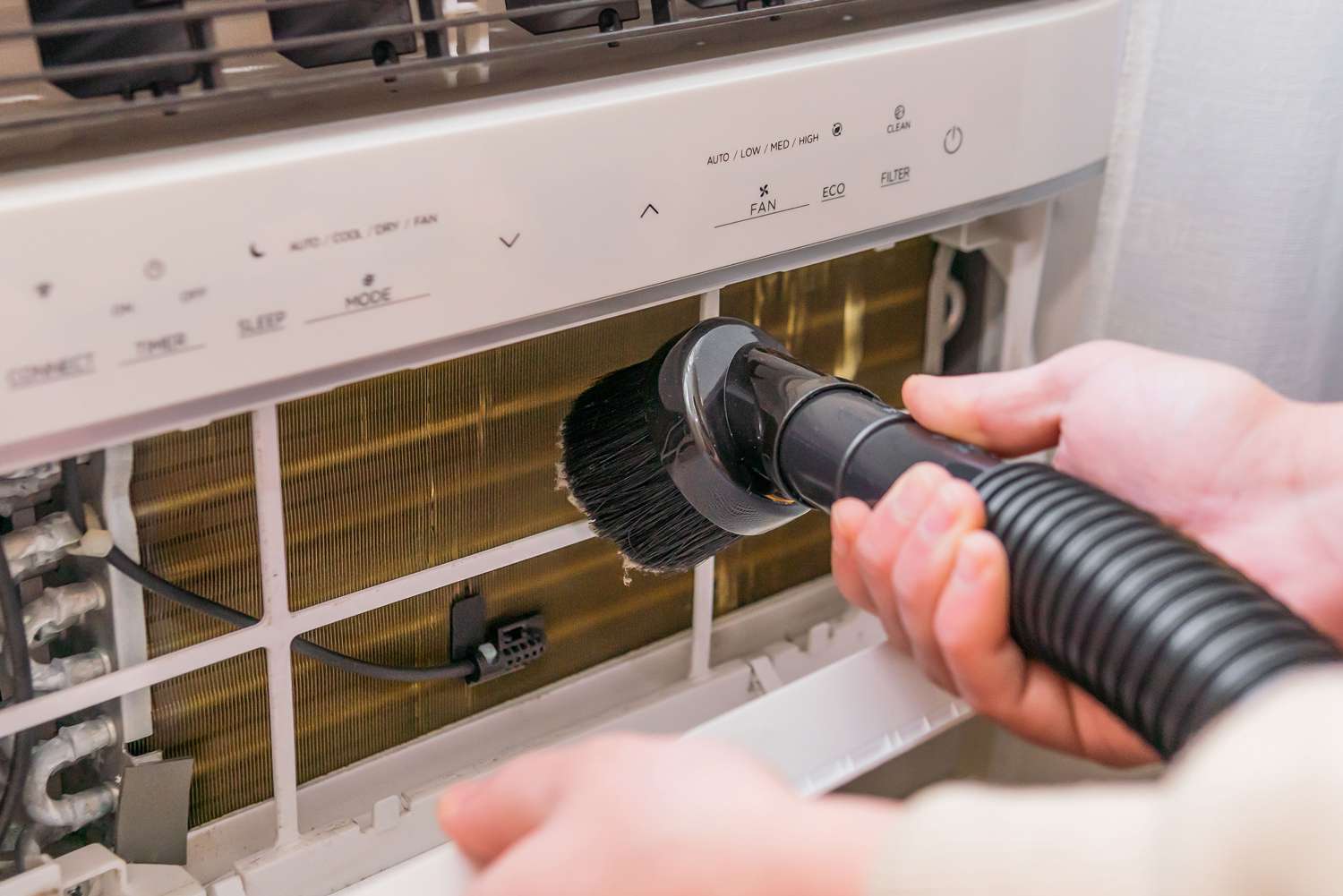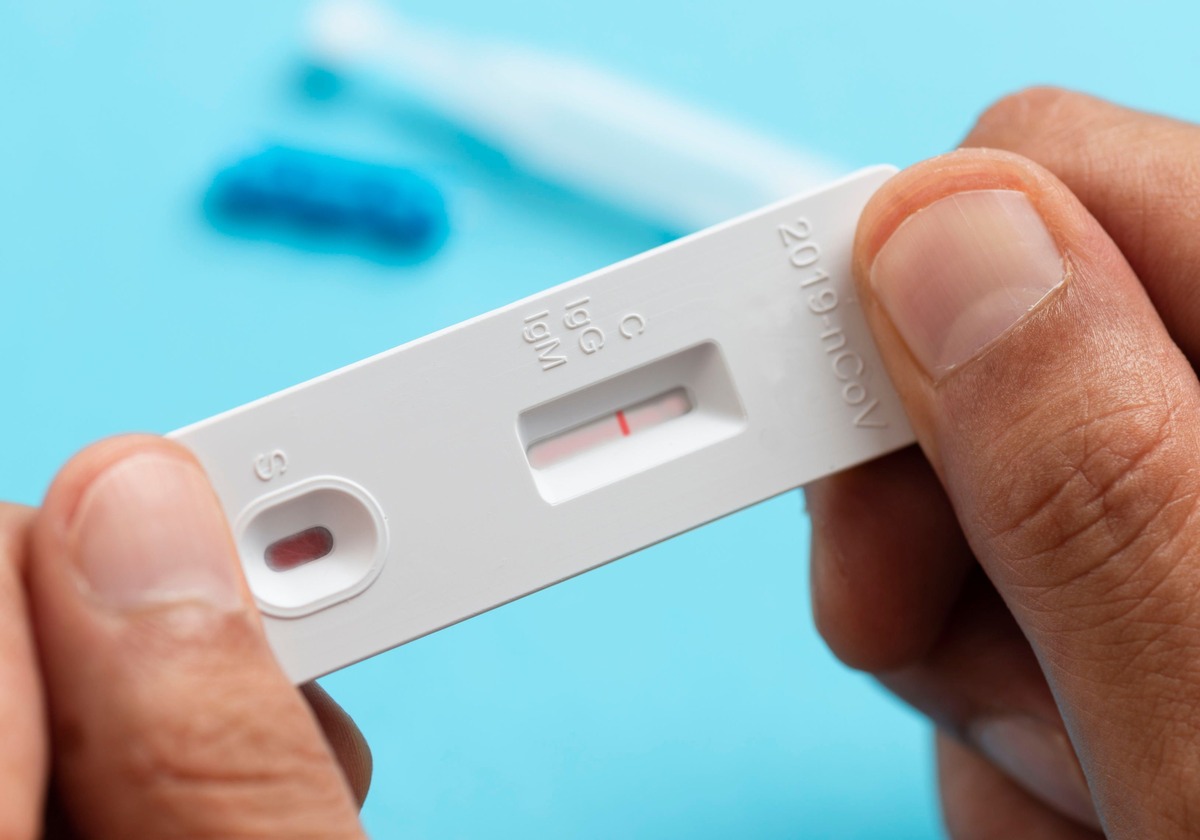Home>Automotive>How To Test Ignition Coil


Automotive
How To Test Ignition Coil
Published: February 25, 2024
Learn how to test an ignition coil in your automotive vehicle with our step-by-step guide. Ensure your car's ignition system is functioning properly.
(Many of the links in this article redirect to a specific reviewed product. Your purchase of these products through affiliate links helps to generate commission for Noodls.com, at no extra cost. Learn more)
Table of Contents
Introduction
The ignition coil is a critical component of a vehicle's ignition system, responsible for transforming the low voltage from the battery into the thousands of volts needed to ignite the fuel and start the engine. A faulty ignition coil can lead to a range of issues, from rough idling and poor fuel economy to difficulty starting the vehicle. Therefore, understanding how to test the ignition coil is essential for maintaining optimal vehicle performance.
In this article, we will delve into the intricacies of ignition coils, explore the signs that indicate a faulty ignition coil, and provide a comprehensive guide on how to test this vital component. By the end of this article, you will have the knowledge and confidence to diagnose and address potential ignition coil issues, ensuring that your vehicle operates at its best.
Let's embark on this journey to unravel the mysteries of the ignition coil and equip ourselves with the skills to keep our vehicles running smoothly.
Read more: How To Test Coil Pack
Understanding Ignition Coils
Ignition coils are vital components within a vehicle's ignition system, playing a pivotal role in the process of starting the engine. These coils are designed to convert the low voltage from the battery into the high voltage needed to ignite the fuel and initiate the combustion process. This transformation is essential for the engine to generate power and propel the vehicle forward.
Most modern vehicles are equipped with an ignition coil for each cylinder, while older vehicles may have a single coil for all cylinders. The ignition coil operates on the principle of electromagnetic induction, utilizing a magnetic field to convert the low voltage into high voltage. When the battery voltage is applied to the primary winding of the ignition coil, it generates a magnetic field. As the current is interrupted, the magnetic field collapses, inducing a high voltage in the secondary winding. This high voltage is then transmitted to the spark plugs, where it ignites the air-fuel mixture in the engine cylinders.
Understanding the intricacies of ignition coils is crucial for diagnosing potential issues and ensuring optimal engine performance. A malfunctioning ignition coil can lead to a range of problems, including misfiring, rough idling, and decreased fuel efficiency. By comprehending the function of ignition coils, vehicle owners can effectively troubleshoot and address any issues that may arise, thereby prolonging the lifespan of their vehicles and maintaining peak performance.
In the next section, we will explore the common signs that indicate a faulty ignition coil, providing valuable insights into identifying potential issues with this critical component.
Signs of a Faulty Ignition Coil
Identifying the signs of a faulty ignition coil is crucial for maintaining the optimal performance of a vehicle. Several symptoms may indicate potential issues with the ignition coil, alerting vehicle owners to the need for diagnostic testing and potential replacement. By recognizing these signs early on, individuals can address ignition coil problems promptly, preventing further damage to the vehicle's engine and ensuring smooth operation.
-
Engine Misfires: One of the most common indicators of a faulty ignition coil is engine misfires. When the ignition coil fails to deliver the necessary voltage to the spark plugs, it can result in intermittent or consistent misfiring of the engine cylinders. This can lead to a noticeable reduction in engine performance, rough idling, and a decrease in fuel efficiency.
-
Difficulty Starting the Engine: A malfunctioning ignition coil can make it challenging to start the vehicle. If the ignition coil fails to provide the high voltage needed to ignite the fuel in the engine cylinders, the vehicle may experience difficulty starting, requiring multiple attempts before the engine successfully turns over.
-
Decreased Fuel Efficiency: When an ignition coil is faulty, it can lead to incomplete combustion in the engine cylinders, resulting in decreased fuel efficiency. This can manifest as a noticeable increase in fuel consumption, requiring more frequent refueling and impacting the overall cost of vehicle ownership.
-
Rough Idling and Vibrations: A faulty ignition coil can cause the engine to idle roughly, producing vibrations and uneven operation. This can be felt as a noticeable shaking or roughness when the vehicle is at a standstill, indicating potential issues with the ignition coil's performance.
-
Illuminated Check Engine Light: In modern vehicles, a faulty ignition coil can trigger the illumination of the check engine light on the dashboard. This serves as an important warning indicator, signaling the need for diagnostic testing to identify the specific issue affecting the ignition system.
Recognizing these signs of a faulty ignition coil empowers vehicle owners to take proactive measures in addressing potential issues. By promptly testing and, if necessary, replacing the ignition coil, individuals can ensure the continued reliability and performance of their vehicles, minimizing the risk of more severe engine-related problems.
In the next section, we will explore the essential tools needed for testing the ignition coil, providing valuable insights into the diagnostic process and equipping vehicle owners with the knowledge to assess this critical component effectively.
Tools Needed for Testing
When it comes to testing the ignition coil, having the right tools at your disposal is essential for conducting a thorough and accurate assessment of this critical component. By utilizing the appropriate tools, vehicle owners and automotive enthusiasts can diagnose potential issues with the ignition coil, enabling them to make informed decisions regarding maintenance and repairs. Here are the essential tools needed for testing the ignition coil:
-
Multimeter: A multimeter is a versatile electrical testing device that is indispensable for diagnosing various components within a vehicle's electrical system, including the ignition coil. It allows users to measure voltage, current, and resistance, providing valuable insights into the performance of the ignition coil's primary and secondary circuits.
-
Spark Tester: A spark tester is a specialized tool designed to simulate the conditions of a running engine, allowing users to verify the presence of spark from the ignition coil. By connecting the spark tester to the ignition coil and observing the presence of a strong, consistent spark, individuals can assess the functionality of the ignition coil in generating the high voltage needed to ignite the fuel in the engine cylinders.
-
Screwdriver or Pliers: Depending on the type of ignition coil and vehicle configuration, a screwdriver or pliers may be necessary for accessing and removing the ignition coil from its mounting location. These tools enable users to safely disconnect the electrical connectors and mounting hardware associated with the ignition coil, facilitating the testing and potential replacement of the component.
-
Safety Equipment: Prior to testing the ignition coil, it is essential to prioritize safety by wearing appropriate personal protective equipment, such as insulated gloves and safety glasses. These precautions help mitigate the risk of electrical shock and ensure a secure testing environment for individuals performing diagnostic procedures on the ignition coil.
By assembling these essential tools, individuals can embark on the process of testing the ignition coil with confidence and precision. These tools enable users to assess the performance of the ignition coil, identify potential faults, and make informed decisions regarding the maintenance and repair of this critical component. In the following section, we will delve into the comprehensive process of testing the ignition coil, providing valuable insights into the diagnostic procedures and interpretation of test results.
Testing the Ignition Coil
Testing the ignition coil is a crucial step in diagnosing potential issues and ensuring the optimal performance of a vehicle's ignition system. By following a systematic testing procedure, individuals can assess the functionality of the ignition coil, identify any faults, and make informed decisions regarding maintenance and repairs. The process of testing the ignition coil involves conducting assessments of both the primary and secondary circuits, utilizing specialized tools to measure voltage, resistance, and the generation of spark.
Read more: How To Remove A Stuck Key From An Ignition
Primary Circuit Testing
To begin testing the ignition coil, it is essential to assess the primary circuit, which is responsible for receiving the low voltage from the vehicle's battery and generating the magnetic field necessary for inducing high voltage in the secondary circuit. Using a multimeter set to measure resistance, individuals can verify the continuity of the primary winding within the ignition coil. By connecting the multimeter probes to the corresponding terminals on the ignition coil, users can obtain a resistance reading within the specified range, indicating the integrity of the primary circuit.
Secondary Circuit Testing
After evaluating the primary circuit, the next step involves testing the secondary circuit of the ignition coil, which is responsible for generating the high voltage needed to ignite the fuel in the engine cylinders. A spark tester is utilized to simulate the conditions of a running engine, allowing individuals to verify the presence of a strong, consistent spark from the ignition coil. By connecting the spark tester to the ignition coil and observing the spark generated during testing, users can assess the functionality of the secondary circuit and the ignition coil's ability to produce the high voltage required for ignition.
Interpretation of Test Results
Upon completing the testing procedures for both the primary and secondary circuits, individuals can interpret the test results to determine the overall condition of the ignition coil. If the resistance readings in the primary circuit fall within the specified range and the spark tester demonstrates the consistent generation of spark in the secondary circuit, it indicates that the ignition coil is functioning correctly. However, if the resistance readings are outside the specified range or the spark tester fails to detect a strong, consistent spark, it may indicate potential faults within the ignition coil, necessitating further diagnostic testing or potential replacement.
By following this comprehensive testing process, individuals can gain valuable insights into the performance of the ignition coil, enabling them to make informed decisions regarding maintenance and repairs. This systematic approach empowers vehicle owners and automotive enthusiasts to effectively diagnose potential issues with the ignition coil, ensuring the continued reliability and optimal performance of their vehicles.
Interpreting Test Results
Interpreting the test results of the ignition coil is a critical aspect of the diagnostic process, providing valuable insights into the overall condition and functionality of this essential component. By carefully analyzing the results obtained from primary and secondary circuit testing, individuals can make informed assessments regarding the performance of the ignition coil and determine the necessary course of action to address potential faults.
When interpreting the test results, it is essential to consider the specified resistance range for the primary circuit of the ignition coil. A multimeter is used to measure the resistance of the primary winding, and the obtained reading should fall within the manufacturer's specified range. If the resistance reading is within the acceptable range, it indicates that the primary circuit of the ignition coil is functioning correctly, allowing for the generation of the magnetic field necessary for inducing high voltage in the secondary circuit. However, if the resistance reading is outside the specified range, it may indicate potential issues with the primary winding, such as a short or open circuit, necessitating further diagnostic testing to pinpoint the exact fault.
In the case of secondary circuit testing, the interpretation of test results revolves around the observation of spark generation using a spark tester. When the spark tester is connected to the ignition coil and the engine is cranked, a strong, consistent spark should be observed, indicating the ignition coil's ability to produce the high voltage needed to ignite the fuel in the engine cylinders. If the spark tester fails to detect a strong, consistent spark, it may signify potential faults within the secondary circuit of the ignition coil, such as insulation breakdown or internal arcing, requiring further investigation to identify the root cause of the issue.
Upon interpreting the test results from both the primary and secondary circuit testing, individuals can gain valuable insights into the overall condition of the ignition coil. If the test results indicate that the ignition coil is functioning correctly, it provides assurance regarding the integrity of this critical component within the vehicle's ignition system. However, if the test results reveal potential faults or discrepancies, it signals the need for further diagnostic testing or potential replacement of the ignition coil to ensure the continued reliability and optimal performance of the vehicle.
By meticulously interpreting the test results obtained from the diagnostic procedures, individuals can make informed decisions regarding the maintenance and repair of the ignition coil, addressing potential issues and safeguarding the efficiency and functionality of their vehicles. This thorough assessment empowers vehicle owners and automotive enthusiasts to uphold the integrity of the ignition system, contributing to the sustained performance and longevity of their vehicles.
Conclusion
In conclusion, understanding how to test the ignition coil is paramount for maintaining the optimal performance and reliability of a vehicle's ignition system. The ignition coil plays a pivotal role in transforming the low voltage from the battery into the high voltage needed to ignite the fuel and start the engine. By recognizing the signs of a faulty ignition coil and conducting comprehensive testing procedures, individuals can diagnose potential issues and take proactive measures to address any faults, ensuring the continued efficiency and functionality of their vehicles.
The signs of a faulty ignition coil, including engine misfires, difficulty starting the engine, decreased fuel efficiency, rough idling, and the illumination of the check engine light, serve as crucial indicators for vehicle owners to identify potential issues with this critical component. By being vigilant and attentive to these signs, individuals can promptly initiate diagnostic testing and address any faults within the ignition coil, preventing further damage to the vehicle's engine and mitigating the risk of more severe problems.
Equipped with the essential tools for testing, including a multimeter, spark tester, and safety equipment, individuals can embark on the diagnostic process with confidence and precision. By following a systematic testing procedure that assesses both the primary and secondary circuits of the ignition coil, individuals can gain valuable insights into its performance and interpret the test results to determine the necessary course of action. Whether the ignition coil is functioning correctly or requires further attention, the testing process empowers vehicle owners to make informed decisions regarding maintenance and potential replacement, safeguarding the integrity of the vehicle's ignition system.
By meticulously interpreting the test results obtained from the diagnostic procedures, individuals can gain valuable insights into the overall condition of the ignition coil. If the test results indicate that the ignition coil is functioning correctly, it provides assurance regarding the integrity of this critical component within the vehicle's ignition system. However, if the test results reveal potential faults or discrepancies, it signals the need for further diagnostic testing or potential replacement of the ignition coil to ensure the continued reliability and optimal performance of the vehicle.
In essence, the ability to test the ignition coil is a valuable skill that empowers vehicle owners and automotive enthusiasts to maintain the efficiency and functionality of their vehicles. By recognizing the signs of a faulty ignition coil, utilizing the essential tools for testing, and conducting comprehensive diagnostic procedures, individuals can ensure the continued reliability and performance of their vehicles, contributing to a safe and enjoyable driving experience for years to come.













